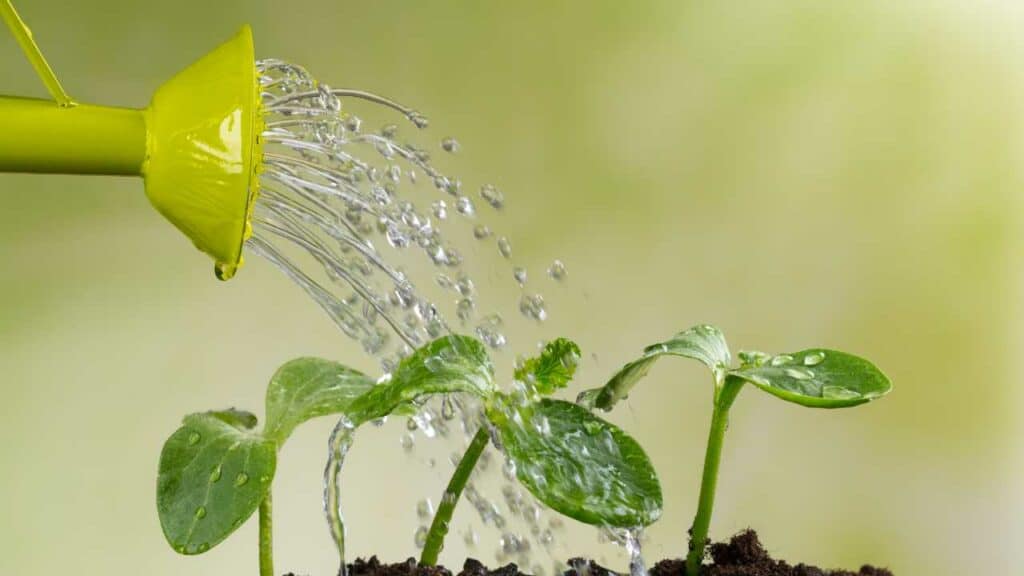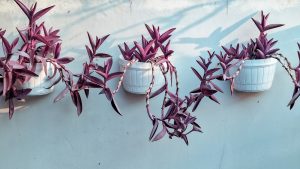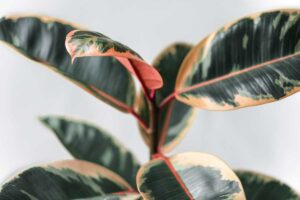Jade plants, also known as lucky plants or money plants, can be an intriguing addition to your home or garden.
You might be wondering if these popular houseplants can bloom, and if so, how to encourage their flowering.
That’s a great question.
Jade plants can indeed bloom. Though it’s relatively rare, jade plants can produce delicate, star-shaped flowers under the right conditions.
To make this happen, you’ll need to understand how factors like light, temperature, and humidity influence your jade plant’s likelihood of blooming.
By creating an environment that mimics its natural habitat, you can optimize its growth and increase the chances of witnessing its fascinating flowering process.
Keep in mind that while outdoor jade plants are more likely to bloom than those indoors, it’s still possible to enjoy this spectacle inside your home by providing adequate sunlight, temperature fluctuations, and proper care.
Let’s explore how to create the ideal environment to encourage your jade plant to bloom.
Do Jade Plants Bloom?
Jade plants can indeed bloom, although it’s a rare occurrence, especially when they are grown as indoor plants.
These beautiful succulents are native to South Africa, and in their natural habitat, they bloom during the winter months, from June to August, producing tiny star-shaped white and pink flowers on their oval, fleshy leaves (The Practical Planter).
To encourage your jade plant to bloom, here are a few factors to consider:
- Age and Maturity: Jade plants need to reach a certain level of maturity before they can produce flowers. It might take several years before you see any blooms, so patience is essential (Gardening Know How).
- Environment: Jade plants prefer an arid environment to form buds. Interior conditions are often too humid, so it’s important to monitor and adjust the humidity levels in your home if possible (Gardening Know How).
- Light and Temperature: These plants require extended periods of intense sunlight and cool temperatures at night during the autumn season to bloom. It might be challenging to replicate this environment indoors, but positioning your jade plant near a sunny window and maintaining cooler temperatures at night could help (Backyard Boss).
- Proper Care: Ensure you are providing your jade plant with appropriate care, including adequate watering, well-draining soil, and occasional fertilization during the growing season. Proper care can contribute to a healthier plant, increasing its chances of blooming (Smart Garden and Home).
Remember, it may still take time and experimentation to achieve the perfect conditions for your jade plant to bloom.
Keep in mind that even in their natural habitat, flowering jade plants are a rare sight, so don’t be discouraged if it takes time.
Types of Blooms on Jade Plants
Jade plants are known for their succulent, fleshy leaves, but they can also produce beautiful blooms.
When your Jade plant is ready to flower, you can expect to see clusters of star-shaped flowers in various shades of white and pink. These delicate blooms add a touch of charm to your already attractive Jade plant.

Even though it’s rare for Jade plants to flower indoors, with proper care and attention, you can coax your plant into blooming.
The key is to provide at least six hours of bright, uninterrupted sunlight daily
When your Jade plant is ready to bloom, you’ll first notice buds appearing within pink sepals. As the flowers grow, they will open to reveal the star-shaped blossoms.
Keep in mind that there are several types of Jade plants, and their bloom colors may slightly vary. Some common types include Crassula ovata and Crassula argentea (Gardening Know How).
To improve your chances of witnessing these delightful blossoms, make sure you provide your Jade plant with the right growing conditions, including adequate sunlight and proper watering.
With a bit of patience and persistence, you can encourage your Jade plant to reward you with a stunning floral display.
Factors Affecting Jade Plant Bloom
Light Exposure
Your jade plant requires plenty of bright, indirect sunlight to encourage blooming.
Providing at least 4 to 6 hours of sunlight is essential for the greenest and healthiest leaves.
Insufficient sunlight can result in narrow, grayish leaves and leggy plants. Feel free to take your jade plant outside during the summer, but remember to keep it in a bright yet shaded spot to prevent sunburn.
Water and Humidity
Watering your jade plant plays a crucial role in its overall growth and potential for blooming. Make sure you allow the soil to dry out between waterings, as jade plants are susceptible to root rot.
Decreasing water supply, particularly during late fall and winter, can encourage the formation of buds and flowers.
Additionally, jade plants prefer low humidity, so keep them away from humidifiers and damp environments.

Temperature
Temperature also affects the blooming process of your jade plant. Aim for a temperature range of 55ºF-75ºF, and expose your plant to cooler nighttime temperatures to encourage blooming.
Cooler temperatures starting in the fall and continuing through late winter to early spring can promote flower production.
Pruning and Maintenance
Proper pruning and maintenance can influence your jade plant’s ability to bloom. Regularly remove dead leaves and branches to promote healthy growth.
Pruning can help shape the plant, allowing more light to reach the interior branches and encourage flowering. Always ensure you use clean, sharp tools to prevent damage to your jade plant.
How to Encourage Jade Plant Blooms
Jade plants can produce beautiful, star-shaped blooms in shades of white or pink. To encourage your jade plant to bloom, you need to provide the right care and growing conditions.
In this section, we’ll explore some tips and tricks to help your jade plant bloom.
Proper Care
To encourage blooming, it is crucial to maintain the proper care for your jade plant. Ensure your plant grows in well-draining soil and receives adequate water without overwatering.
Additionally, provide enough sunlight for your jade plant as it prefers bright, indirect light. Regularly rotate your plant to ensure even exposure to sunlight for healthy growth.
Fertilizing
Fertilizing your jade plant can also promote blooming. Use a balanced, diluted liquid fertilizer during the growing season (spring through summer).
Avoid over-fertilizing, as this may hinder flowering. Typically, fertilizing every two to three months should suffice.
Stress Induction
Jade plants may be encouraged to bloom by mimicking their native growing conditions, which include cool nights, bright days, and periods of water scarcity.
Allow the soil to dry out between waterings, decrease watering frequency during the winter months, and maintain a cooler environment by placing your jade plant in a location with cool nighttime temperatures (around 60 degrees Fahrenheit or 12 degrees Celsius).
This mild stress can trigger the plant to produce buds and flowers.
Conclusion
By now, you know that jade plants can indeed bloom, producing lovely pink or white, star-shaped flowers in clusters when given the right conditions. With a bit of effort and attention, you can encourage your jade plant to produce these beautiful blossoms.
Patience and care are key in getting your jade plant to bloom. Remember that flowering is more likely to occur as the plant matures and requires specific conditions to trigger its blossoming process.
By following the tips provided here and giving your plant the conditions it needs, you’ll increase the likelihood of witnessing these charming flowers, enhancing the beauty of your jade plant.
- Philodendron Care, Varieties, And Aesthetic Home Arrangements
- Best House Plants for Low Light – Thriving Indoors with Minimal Sunlight
- 15 Air-Purifying Houseplants That Release The Most Oxygen
- Purple Houseplants: Your Guide to Dramatic Indoor Beauty
- Philodendron Moonlight Vs. Golden Goddess
- How to Revive Your Rubber Plant: 6 Tips to Help Your Rubber Tree Thrive Again






